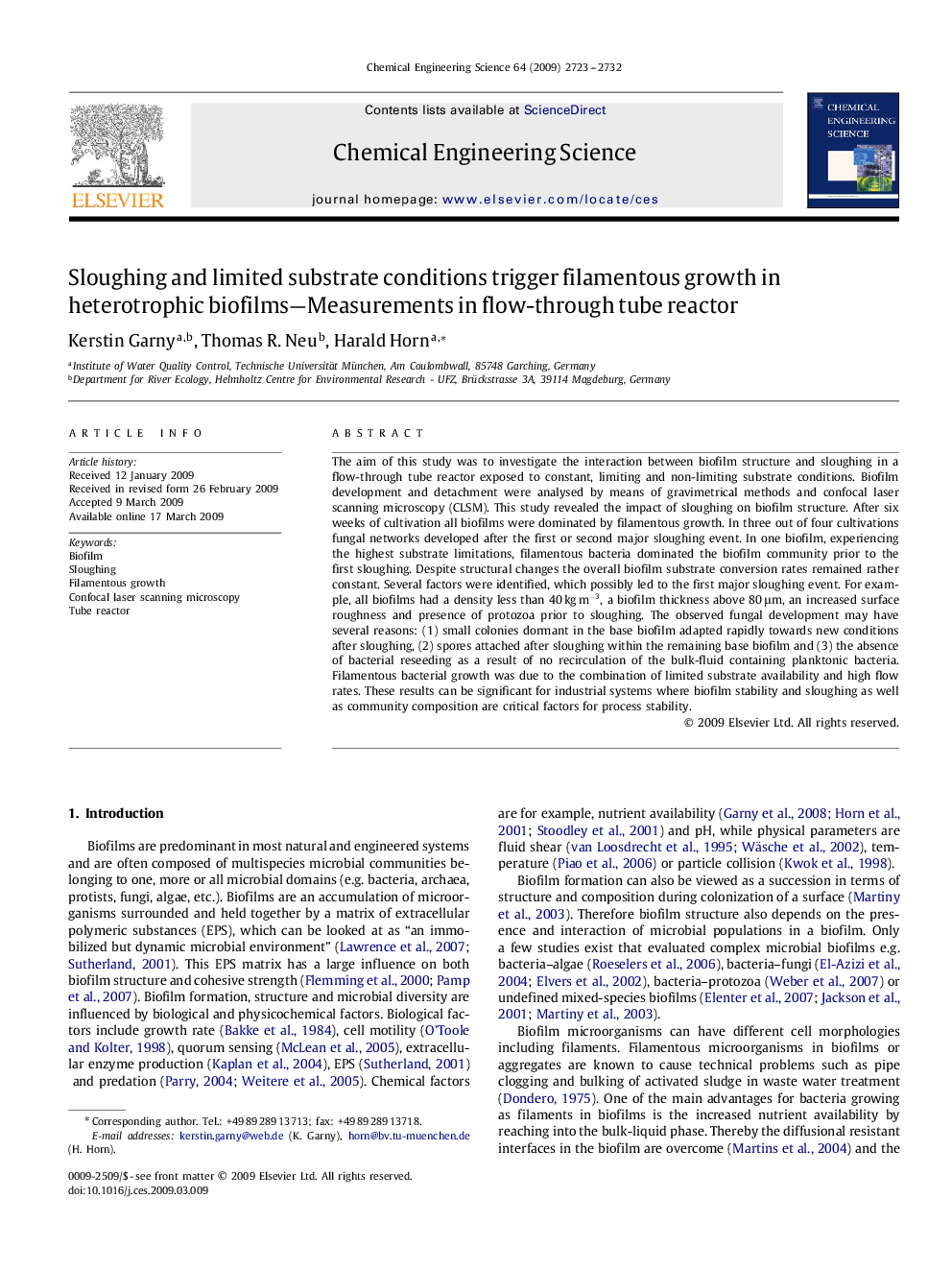| Article ID | Journal | Published Year | Pages | File Type |
|---|---|---|---|---|
| 157942 | Chemical Engineering Science | 2009 | 10 Pages |
Abstract
The aim of this study was to investigate the interaction between biofilm structure and sloughing in a flow-through tube reactor exposed to constant, limiting and non-limiting substrate conditions. Biofilm development and detachment were analysed by means of gravimetrical methods and confocal laser scanning microscopy (CLSM). This study revealed the impact of sloughing on biofilm structure. After six weeks of cultivation all biofilms were dominated by filamentous growth. In three out of four cultivations fungal networks developed after the first or second major sloughing event. In one biofilm, experiencing the highest substrate limitations, filamentous bacteria dominated the biofilm community prior to the first sloughing. Despite structural changes the overall biofilm substrate conversion rates remained rather constant. Several factors were identified, which possibly led to the first major sloughing event. For example, all biofilms had a density less than 40 kg mâ3, a biofilm thickness above 80 μm, an increased surface roughness and presence of protozoa prior to sloughing. The observed fungal development may have several reasons: (1) small colonies dormant in the base biofilm adapted rapidly towards new conditions after sloughing, (2) spores attached after sloughing within the remaining base biofilm and (3) the absence of bacterial reseeding as a result of no recirculation of the bulk-fluid containing planktonic bacteria. Filamentous bacterial growth was due to the combination of limited substrate availability and high flow rates. These results can be significant for industrial systems where biofilm stability and sloughing as well as community composition are critical factors for process stability.
Related Topics
Physical Sciences and Engineering
Chemical Engineering
Chemical Engineering (General)
Authors
Kerstin Garny, Thomas R. Neu, Harald Horn,
